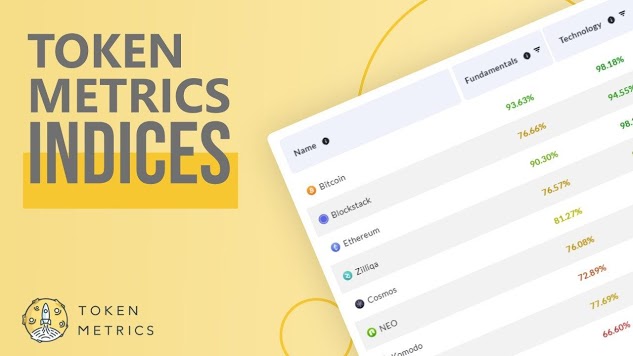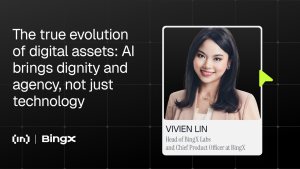Decentralized Insurance Built on the Blockchain is a Game Changer

Decentralized insurance built on a transparent, blazingly fast, and efficient blockchain with the community in mind is something to think about, says Adam Hofmann, the CEO of Nimble.
Let’s face it – crypto, Web3, blockchain, whatever you want to call it – is growing fast. As a result, there are concerns and skepticism around the volatility and safety of digital assets, including investor funds. Would you put your hard-earned money into anything without some sense of safety and security?
If we are going to be honest with each other, and we certainly should be, it is absolutely logical that companies are skeptical to put big money into a decentralized system.
In both the fast-evolving DeFi space and the “Normalverse,” there is always the risk of hacks or exploits. Enter: decentralized insurance.
“There have been innumerable cases of smart-contracts hacking, cyber-attacks on exchange platforms etc. that have caused huge loss of investor funds,” Blockchain Simplified states on Medium. “Even the magnanimous DAO could not prevent a malware attack on its platform that resulted in loss of billions. Decentralized Insurance has plenty of use-cases that can help prevent such consequences from occurring.”
DeFi Insurance
We can work together to build these preventative use cases. Let’s rethink the traditional insurance cycle for the DeFi world:
When a policyholder buys decentralized digital asset coverage, they are willingly participating in protection of their participation on the blockchain. The purchase of insurance comes from a “pool of money” that has been subsidized by what is traditionally known as insurance providers.
In DeFi language, these “insurance providers” are more appropriately liquidity providers (LP), or Insurance Liquidity Providers. These LPs can be any company or individual who locks their capital into a decentralized risk pool with other similar providers. Coverage can range from digital asset and smart contract risk cover to protecting NFTs, DAO governance, and wallets—and as far and wide as you can imagine.
Now, let’s go one step beyond that. This policyholder has purchased coverage for their participation in another DeFi project. They’ve decided to participate in ABC Project by providing collateral, but have purchased insurance coverage in the event there is a hack or vulnerability with ABC’s smart contracts. Not only have they protected their “stake” in that risk, but they have effectively removed that risk from the ABC Project.
What does this mean? It means a risk pool built on community allows the users, project, and LPs to all work toward a common call of safety and security. ABC Project can subsidize the premiums or risk pool to incentivize users to buy insurance. By doing so, the users can purchase cost-effective insurance coverage. This means LPs have a steady stream of premiums. Ultimately, the overall risk of ABC has been diversified – and the entire process is more efficient.
Decentralized Insurance: Efficiency
The efficiency comes from the community approach that decentralized insurance allows for. In the Normalverse, if a business causes you harm, you typically seek damages from its insurance policy.
That means you wait for them to respond, wait for the insurance company to investigate, negotiate with the insurance company, and in some cases the flow of claims payments comes through that business. This causes just a bit of heartburn for the aggrieved party. What we don’t often think about is the heartburn it causes the business as well.
Consider a ridiculously optimistic statement that “most businesses value their customers.” Or, if you are a bit more pessimistic: businesses realize that to drive profit, they need to keep their customers happy.
In the claim scenario outlined above, the pressure to push the insurance company to respond quickly is on the business. The pressure to communicate with their customers takes up hours and hours of time. The loss of income and reputation in the meantime can be unrepairable. All of this feeds a disincentive loop where claimants often fight with businesses who fight with insurance companies who fight with the claimants who fight with … you get it.
Incentive Loop
A decentralized insurance model, instead, feeds an incentive loop. The business can remove the friction and time spent during claims by working with their users (a novel concept) to ensure that claims flow directly to them without the intermediary. This frees up the business’s time for PR and creates a smooth “disaster plan.” On top of that, it transfers much of the risk off their plate. See? An actual incentive loop.
This isn’t the only reason a decentralized community is beneficial for decentralized insurance. The traditional insurance industry is worth more than $5 trillion and often puts profit over people, or at the very least, it has the perception of putting profits over people.
Building the insurance system on-chain means you are working with like-minded individuals. Incentive loop! Traditional, centralized insurers often have efficiency issues stemming from multiple supervisor sign-offs, long process, etc., that can create delays of days or weeks to process payments and claims.
Days and weeks could mean a dramatic change in the value of your digital asset. Time and efficiency are critical. I’ll leave out the static values of traditional insurance policies, predator claims practices, and opaque propaganda for another time.
Decentralized Insurance Advantages
Research published in SAGE Open talks about the advantages of blockchain-based insurance: “The insurance sector can benefit from the adoption of blockchain technology where the operations span across multiple countries and has many actors including the end user,” the authors wrote.
“The insurance industry can be connected via a decentralized network wherein the transactions are recorded across distributed ledgers. The trust for transactions can be provided by the blockchain members through consensus, thereby eliminating the need for third parties. Contracts and Insurance policies can be recorded electronically as smart contracts with a set of rules for the terms, conditions, duration of the policy, etc.”
Theoretically, decentralized insurance providers such as Nimble on the Algorand network allow for less bias from claims assessors, underwriters, and actuaries, a more efficient business process, and less of a disincentive loop; all while creating cost-effective and profitable risk models.
A decentralized approach to digital asset insurance is about community. Everyone benefits from the actions of others in the community, everyone has a transparent view of the system and process, and everyone works toward profitability because everyone gets a piece of the insurance profit pie.

Moving Forward
Of course, there is risk in the decentralized insurance world. We can’t bubble-wrap ourselves in snappy plastic blockchain protection and ship ourselves off into the metaverse without risk. That isn’t feasible and isn’t how life works.
It’s important that there are enough policyholders buying coverage, enough capital provided by LPs, and enough education to help the community understand how they are working together.
We also need to work with incumbent insurance companies to help them understand that building decentralized insurance processes doesn’t mean a bankrupt insurance industry, but instead a new way forward where all members of the process receive fair and equitable treatment.
You can guess what I’m about to say: “Incentive Loop.”
The reality is that even in a utopian traditional insurance world where insurance companies are empathetic to the needs of their customers, everything goes as planned, and birds are singing throughout the process – legacy technologies in the insurance industry will not work efficiently as we move forward.
A decentralized insurance system with traditional insurance risk models, projections, and underwriting data built on a transparent, blazingly fast, and efficient blockchain with the community in mind – well, that’s a game changer.
About the author

Adam Hofmann is the Founder and CEO of Nimble, a global decentralized insurance company that is building and deploying Web3.0 and blockchain tools and technology to power the community-centric future of efficient and equitable insurance processes. He is based in Massachusetts.
Disclaimer
All the information contained on our website is published in good faith and for general information purposes only. Any action the reader takes upon the information found on our website is strictly at their own risk.













